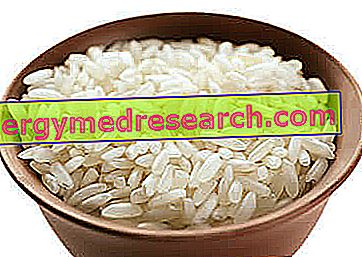There is a relationship between exercise intensity and fat consumption, we find out which one
The energy needed to satisfy the body's energy demands derives in a different percentage from the oxidation of CARBOHYDRATES (plasma glucose and muscle glycogen), PROTEINS AND LIPIDS (fatty acids from adipose tissue and muscle triglycerides).
The main factors that determine which of these three energy substrates will be used by the muscles during exercise are:
TYPE OF EXERCISE (continuous or intermittent)
DURATION
INTENSITY'
STATE OF TRAINING
DIET COMPOSITION (nutritional status of the subject)
STATE OF HEALTH OF THE SUBJECT (metabolic diseases such as diabetes modify the use of energy sources)
In the low intensity physical activity (25% -30% of VO2 max) the energy is mainly supplied by the lipid metabolism with the release of fatty acids from the triglycerides of the adipose tissue (slimming diets) while the intramuscular triglycerides and the glycogen do not contribute decisively to energy production.

The maximum activation of fatty acid metabolism is reached on average 20-30 minutes after the beginning of the physical exercise. The mobilization of fatty acids from adipose tissue, subsequent transport into the bloodstream, entry into cells and then into the mitochondria is in fact a rather slow process.

Summing up:
IF PHYSICAL ACTIVITY IS LOW-INTENSITY BUT LONG TIME LIPIDS AND CARBOHYDRATES SHALL CONTRIBUTE IN EGUAL MEASURE TO THE ENERGY REQUEST
IF PHYSICAL ACTIVITY IS LOW INTENSITY BUT PROPOSES FOR AT LEAST AN HOUR THERE IS A DEPAUPERAMENTO OF THE RESERVES OF GLYCOGENOUS AND GREATER USE OF LIPIDS THAT ARRIVE TO COVER 80% OF THE ENERGY REQUEST.
The progressive prevalence of lipid metabolism during prolonged physical activity depends on the hormonal setting that is established:

In the first hour, 50% fat (37% FFA) is used, in the third 70% (50% FFA).
The metabolic mixture varies according to the intensity of the muscular work:
WITH LOWER INTENSITY THE MAIN ENERGY SOURCE IS REPRESENTED BY FATS
AT HIGHER INTENSITY THE USE OF FATS REMAINS CONSTANT, BUT THERE IS A PROGRESSIVE INCREASE IN THE USE OF GLUCOSE AND MUSCULAR GLYCOGEN (the amount of energy released by fat oxidation is equal to 25% and 75% of the VO2max).
The trained muscles have a greater ability to take FFA than the untrained, therefore
TRAINING ALLOWS YOU TO SAVE GLICOGENOUS STOCKS
TRAINING ALLOWS TO OPTIMIZE THE USE OF GREASES FOR ENERGY PURPOSE

Adaptation of skeletal muscle to training:
Increases the intracellular availability of Krebs cycle enzymes and electron transport chain
Improves the transport of fatty acids through the membranes of the muscle cell
Increases the transport of fatty acids into the mitochondria (a mechanism linked to carnitine)
Increases the number and size of capillaries
Increases the number and size of mitochondria
Increases the VO2 max, therefore increases the availability of OXYGEN which is the LIMITING FACTOR OF THE USE OF FATTY ACIDS FOR ENERGY PURPOSE
Aerobic training therefore allows a greater release of ATP from β-oxidation and increases the resistance of the cell regardless of glycogen storage.
In the physical activity of MEDIA or MODERATE intensity (50% -60% VO2max) the role of plasma fatty acids is reduced and the energy deriving from the oxidation of muscular triglycerides is increased to even the count between these two sources (NB: yes reduces the percentage contribution of fatty acids but in absolute terms remains constant).

Over time during a moderate intensity exercise occurs:
glycogen depletion, decreased blood glucose level and increased triglycerides, increased protein catabolism to cover energy needs. Plasmatic glucose thus becomes the main energy source as far as carbohydrates are concerned, but most of the energy is supplied by lipids.
If the exercise lasts a long time the liver is no longer able to circulate enough glucose to satisfy the muscular demands and the blood sugar drops (even 45 mg / dl during 90 minutes of strenuous exercise).
Fatigue occurs when there is extreme depletion of glycogen in the liver and muscle regardless of the availability of oxygen in the muscle.
Physical activity of HIGH INTENSITY (75-90% of VO2MAX) cannot be continued for over 30-60 minutes even in trained subjects. From a physiological point of view, catecholamines, glucagon and inhibition of insulin secretion are released. The hormonal structure that is established stimulates hepatic and muscular glycogenolysis.

IN ADDITION, THE HIGH ENERGY REQUEST CAUSES THE INCREASE IN THE PRODUCTION OF LACTIC ACID THAT IS ACCUMULATED IN THE MUSCLE AND BLOOD INHIBITING THE LIPOLYSIS IN THE ADIPOSE FABRIC.
CONCLUSION: the limiting factor of sports performance is the availability of oxygen .
In conditions of poor oxygenation glucose, along with the reserves of muscle phosphates is the only usable energy source.
Anaerobic glycolysis has an efficiency 20 times lower than aerobic glycolysis and causes the production of lactic acid a metabolite responsible for muscle fatigue.
The higher the VO2 max is at a given workload, the higher the contribution of fats in energy metabolism. Therefore, training that improves VO2max also increases the ability to use fat as a primary energy source.



